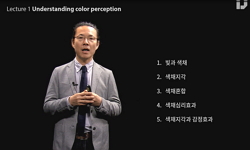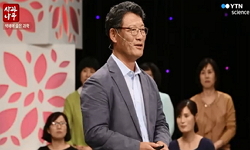Hanging Painting is a ritual Buddhist painting used for large outdoor rituals, such as Yeongsanjae, Yesujae, Suryukjae, and rain ritual. It has been since the 17th century that Hanging Painting was included in the collection of rituals, indicating tha...
http://chineseinput.net/에서 pinyin(병음)방식으로 중국어를 변환할 수 있습니다.
변환된 중국어를 복사하여 사용하시면 됩니다.
- 中文 을 입력하시려면 zhongwen을 입력하시고 space를누르시면됩니다.
- 北京 을 입력하시려면 beijing을 입력하시고 space를 누르시면 됩니다.
조선조 19세기 후반〜20세기 초반 拈花印석가불괘불도 연구 = A Study on Hanging Painting of Yeomhwain Sakyamuni Buddha in the Late 19th and Early 20th Century of Joseon Dynasty
한글로보기https://www.riss.kr/link?id=T15486266
- 저자
-
발행사항
서울 : 동국대학교, 2020
-
학위논문사항
학위논문(석사)-- 동국대학교 : 불교예술문화학과 불교미술전공 2020. 2
-
발행연도
2020
-
작성언어
한국어
- 주제어
-
발행국(도시)
서울
-
형태사항
89p. ; 26 cm
-
일반주기명
지도교수: 김창균
-
UCI식별코드
I804:11020-000000080345
- DOI식별코드
- 소장기관
-
0
상세조회 -
0
다운로드
부가정보
다국어 초록 (Multilingual Abstract)
Hanging Painting is a ritual Buddhist painting used for large outdoor rituals, such as Yeongsanjae, Yesujae, Suryukjae, and rain ritual. It has been since the 17th century that Hanging Painting was included in the collection of rituals, indicating that Hanging Painting appeared during the late Joseon Dynasty based on the prevalence of outdoor rituals.
The second half of Joseon Dynasty, which was the period from the Sunjo to Sunjong rules (1800-1910), was a period of extreme confusion both politically and socially due to the suppression of big powers and public uprisings. The tendency of the public, including the royal family, to rely on religions during this time period can be inferred from the fact that a lot of Hanging Painting used for outdoor rituals were created.
Hanging Painting is classified according to the characteristics of Buddha, such as the Vulture Peak Assembly, Amitabha Buddha, Vairocana Buddha, Rocana Buddha, Maitreya Buddha, Buddhas of Three Ages and Buddhas of Three Bodies and Three Ages, and the Painting of the Vulture Peak Assembly among them was created the most in the late Joseon Dynasty. The Painting of the Vulture Peak Assembly, which appears continuously, was also depicted as the icon of Buddha holding lotus flowers –in other words, Flower Sermon-, and this tells the story of Sakyamuni Buddha in Yeongchwisan Mountain where only Kasyapa smiled knowing the meaning when Sakyamuni Buddha held the flower while preaching 『The Lotus Sutra』.
Although Flower Sermon is not delivered through 『The Lotus Sutra』, the new icon called ‘Yeomhwainbul’, emerged due to the faith in Lotus Sutra and the prevalence of the Zen sect, which featured the late Joseon Dynasty.
Hanging Painting of Yeomhwain Sakyamuni Buddha, created in the late 19th century, consists of <Hanging Painting> (1879) of Gaeunsa Temple in Seoul, <Hanging Painting> (1886) of Bongeunsa Temple in Seoul, <Hanging Painting> (1895) of Bulamsa Temple in Namyang-ju, and <Hanging Painting> (1901) of Hogukgijangsa Temple in Seoul in the early 20th century. The examples of the icon of Yeomhwainbul can be seen in 『The Lotus Sutra』 Illustration (1622) of Cheonggyesa Temple, Gwonsupanhwa(卷首版畫) 『The Lotus Sutra』 Illustration (1655) of Beopjusa Temple, and 『Seonmunjosayechambeop (禪門祖師禮懺法)』 engraving of Buinsa Temple of Palgongsan Mountain. In addition, starting with <Hanging Painting of Sakyamuni> of Magoksa Temple in Gongju, which was created in the 17th century as coroneted Buddha, Hanging Paintings of Seonseoksa Temple in Seongju (1702), Yongmunsa Temple in Yecheon (1705). Odeoksa Temple in Buyeo (1768), and Namjangsa Temple in Sangju (1788) are being handed down as the Buddhist icon in the 18th century. The record shows that this Hanging Painting of Yeomhwain painted Sakyamuni Buddha or the Vulture Peak Assembly on Paint Desktop(畫面) or Record(畵記), indicating that the painting of Yeomhwainbul is Sakyamuni.
Yeomhwainbul created in the 17th and 18th centuries were examined for smooth study on four pieces of Hanging Painting of Yeomhwain Sakyamuni Buddha, which were created in the late 19th and early 20th centuries of Joseon Dynasty. This study intends to discuss the academic, artistic and Buddhist historical significance by specifically looking into the painting, picture composition, image form of Buddha, color and expression technique that emerged through the exchange of the sect and monks artists who created ‘Hanging Painting of Yeomhwain Sakyamuni Buddha’ in the late 19th and early 20th centuries.
목차 (Table of Contents)
- Ⅰ. 머리말 1
- Ⅱ. 19세기 후반20세기 초반 拈花印석가불괘불도의 조성배경 및 조성현황 5
- 1. 조성배경 5
- 2. 조성현황 18
- Ⅲ. 19세기 후반20세기 초반 拈花印석가불괘불도의 도상 및 형식 28
- Ⅰ. 머리말 1
- Ⅱ. 19세기 후반20세기 초반 拈花印석가불괘불도의 조성배경 및 조성현황 5
- 1. 조성배경 5
- 2. 조성현황 18
- Ⅲ. 19세기 후반20세기 초반 拈花印석가불괘불도의 도상 및 형식 28
- 1. 도상 28
- 2. 형식 40
- Ⅳ. 19세기 후반20세기 초반 拈花印석가불괘불도의 양식특징 46
- 1. 화면구성 46
- 2. 존상형태 55
- 3. 색채 63
- 4. 표현기법 68
- Ⅴ. 19세기 후반20세기 초반 拈花印석가불괘불도의 불교회화사적 의의 71
- Ⅵ. 맺음말 75
- 참고문헌 78
- 표 목 록 83
- 삽도목록 83
- 도판목록 83
- ABSTRACT 87












